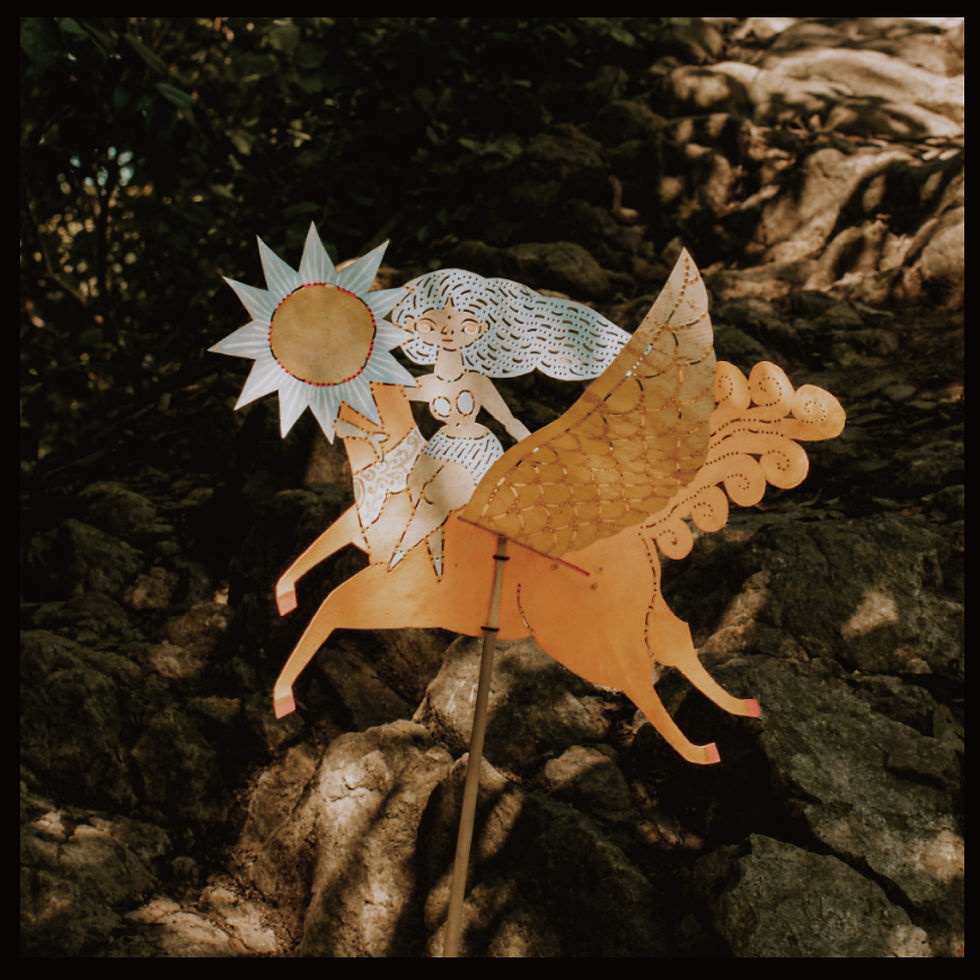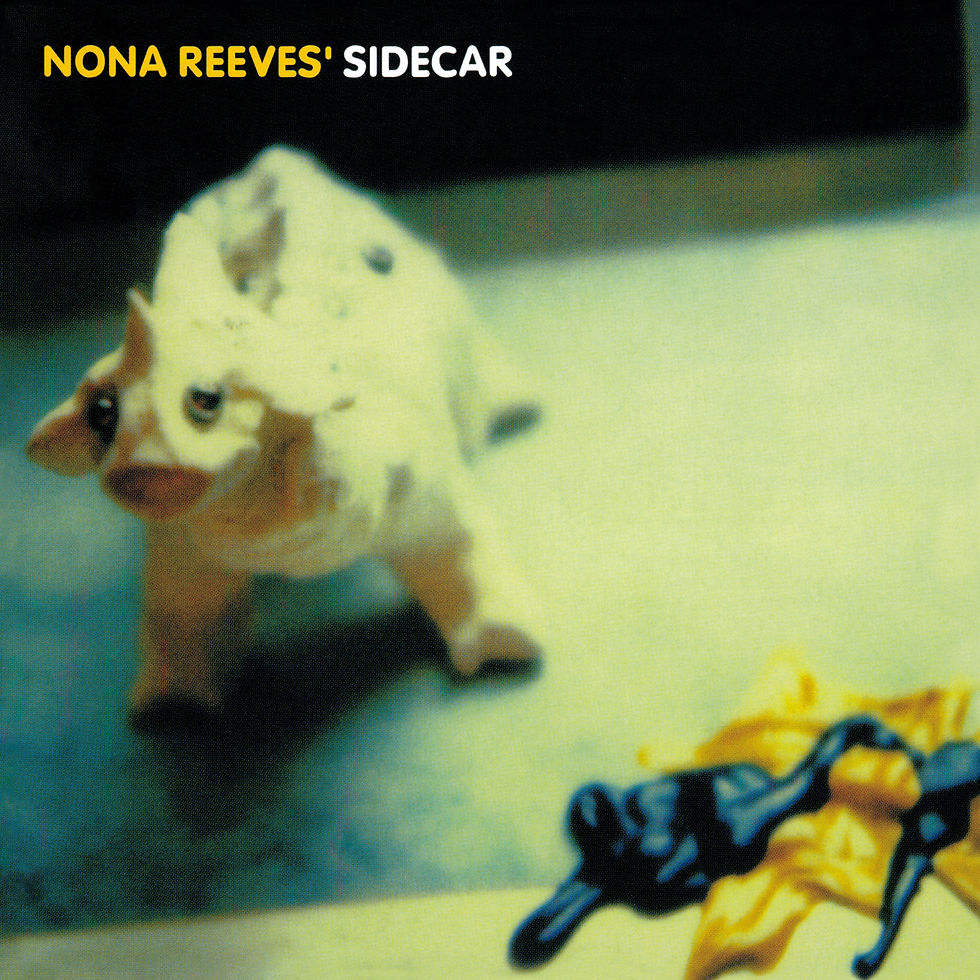[Description]
The definitive edition of ’77 LIVE, capturing The Les Rallizes Dénudés at the peak of their essence with a thunderous live performance, is now being reissued as a double-disc set with the latest remastering!
Note:
Please note that this product is available for purchase only to customers residing in Japan and the Asia region. please read the description on the right side of this page.
Recorded during The Hadaka no Rallies' live performance in Tachikawa, Tokyo on March 12, 1977, ’77 LIVE has been eagerly awaited for re-release after undergoing remastering by Makoto Kubota. Experience the miracle live show lasting an hour and a half, filled with overwhelming waves of sound and versatile improvisations.
‘77 LIVE Liner Notes
All idle thoughts were dissipated. It was when I first heard this album in 1991. My whole body rejoiced. Music has no limits, so I sensed it from deep within my heart.
‘77 LIVE was produced by Takashi Mizutani and released on August 15, 1991, as a 2CD set. It contains recordings from a Les Rallizes Dénudésconcert held on March 12, 1977, at Tachikawa Social Education Hall in Tachikawa, Tokyo.
Thirty-one years after its initial release, the original source audio was revisited by one-time Rallizes member Makoto Kubota, and put through a remastering process, and this disc is the newly-created result.
In 1991, Les Rallizes Dénudés/Takashi Mizutani announced the simultaneous release of three separate albums: ‘67-’69 Studio et Live, MIZUTANI, and ‘77 LIVE. The intention behind the releases was articulated by Mizutani in an interview published in the November 1991 issue of Music Magazine (correspondence was done by this author via fax, between Paris and Tokyo):
There was no logical context, in the usual sense. There was no grand design, either. To put it in my own words, I would describe it as a kind of fireworks, or playing with fire. The actual work turned out to be something extremely difficult, however. By the time the decision was made to produce the CDs, the criteria for what to include was already in my HEAD. Of course, it’s not something I had thought about before, but to put it in words for the time being, the criteria was that they had to be between the time of original formation and the Bell Commons shows from the late ‘70s.
In the twelve years between fall 1967, when Les Rallizes Dénudés was formed, and November 1, 1978, when they played Bell Commons in Aoyama, Tokyo, the Rallizes were involved in a countless number of shows. One can imagine that they made a no small number of recordings in a studio, as well. Mizutani continued:
I wasn’t content until I checked all the TAPES in my possession that fell within that time frame. Approximately 200-300 TAPES (mostly between 90 min. and 120 min.), all of which I listened to. That was a wonderful period. As someone who isn’t easily caught off guard, it didn’t feel like a chore at all.
A carefully curated selection of recordings comprise these three titles. It’s a display of conviction on the part of Les Rallizes Dénudés. Or perhaps, they each represent an expression of Les Rallizes Dénudés, as experienced by Takashi Mizutani.
Further, the process of digitizing the tapes seemed to have initiated a persistent and complicated pursuit. Mizutani explained it this way:
While converting from analog to digital, I had been locked up in the studio and, if I may put it simply, it seemed that the process of thoroughly deconstructing the unpalatable digital sounds and making it sound closer to the original source was quite a difficult task. What you hear is the result of the maximum effort put in by the studio’s engineering staff. There must have been parts that had to be cut due to the complexity of the process. Digital audio, it seems, is a troublesome thing.
No sounds have been added to the original live recording. The sounds that Mizutani was feeling at that particular point in time, the sounds of Les Rallizes Dénudés that had been reverberating inside Mizutani since March 12, 1977, and the difficulties in translating those sounds onto a single album—the frustration can be felt in Mizutani’s words.
The sound impression of ‘77 LIVE is an extremely rare thing. It poses an unexplored aural sensation. There’s more distortion beyond the distortion. The respective sounds in the foreground and background create friction in between, expanding the sound waves in all directions. It isn’t just a cluster of sound crashing into the listeners. Rather, the entire body gets sucked into the sound, and you’re unable to break free.
Rather than something that had been calculated and constructed, it can be seen as the result of various factors stacked on top of each other, at the convergence of chance and necessity. Of course, the venue plays a part in sculpting the sound. But we don’t know what that sound will be until it is heard. Live shows are especially susceptible to the situation at hand on any given day. And it’s an entirely different situation from the modern-day stages outfitted with digital equipment. That is why each of the extant recordings possesses a distinct air and a particular tone. Perhaps this March 12, 1977 date was a culmination for Les Rallizes Dénudés, who had continuously been active since 1967. Or perhaps, it was a new beginning.
The lineup at the time consisted of Takashi Mizutani (guitar, vocal), Takeshi Nakamura (guitar), Hiroshi Narazaki (bass), and Toshiro Mimaki (drums). Nakamura was an original member of Les Rallizes Dénudés. Mimaki had been a staff member at OZ. Narazaki, previously with Datetenryu, came to Les Rallizes Dénudés after a stint with Zunou Keisatsu. He would go on to play in his own bands, such as Port Cuss and Niplets, and solo under various names including Hiroshi and Youri Kun. The rhythm section of Naruzaki and Mimaki was capable of creating a wide range of beats. They conjure up a Turkish-style 12-beat rhythm on “Flame of Ice”; an R&B groove on “Deeper than the Night”; and instill a pop sense in “Night, the Assassin’s Night” that recalls the song “I Will Follow Him.” A considerable musicality can be found wallowing in the depths of these fiery sounds.
For these notes, then-manager Minoru Tezuka provided some valuable words that offer a rare insight into that particular show. I was surprised to hear that a 4-way sound speaker system was used for the performance.
“The venue had very good sound, such that it gave you goosebumps. That I remember well,” Tezuka wrote. I got goosebumps just from reading that line. “That day marked the birth of the new Rallizes sound, one in which the noise would be amplified quite clearly.”
Les Rallizes Dénudés continued its path forward. The seemingly unmatched miracle of ‘77 LIVE was perhaps just a single part of the sum that comprises the whole of Les Rallizes Dénudés.
In the aforementioned fax interview, Mizutani expressed these thoughts:
Immobile things, sweet things
Immobile, nevertheless sweet things
Something more severe
Than the sweetness seen in transience
Nighttime areas Space and dimension From which we deviate
Deviation as a result Unintentional deviation
When arranged deviation is accomplished as intended
Deviation will no longer exist
In the trajectory as planned
Manabu Yuasa, September 2022
The memorandum text by Minoru Tezuka is below
Here's a brief overview of the staff associated with The Les Rallizes Dénudés.
In the early days, lighting was often handled by Antonio and his team at various venues. As for sound, while there were occasional changes in the company responsible, there wasn't a dedicated sound engineer at first. However, at some point, Hisashi Kato joined as the mixer.
The lighting team eventually settled under the leadership of Taku Yamada. I first met Taku, known as "Tak" at "Horagai" said to be Japan's first rock café, located in Kokubunji, Tokyo. Horagai was a Mecca for poets, revolutionaries, artists, peasants, and dream-chasing travelers of the '60s and '70s. I frequented the place, got acquainted with many faces, and received assistance in setting up numerous events.
The designer who created posters and flyers, Makoto Takashima, lived near Japan Maher Heights in Fussa at the time, sharing a house with drummer Shunichiro Masuda.
I believe he was a student at Musashino Art University. I think he was the one who hung the rose flag and draped the dyed cloth over the Guitars backstage, but memories are distant.
I believe the photos for the '77 LIVE poster and flyers were chosen by Mr. Mizutani. I asked Mr. Masanobu Tamura from the external agency CCC Printing to handle the manuscript.
For the text, I quoted from "Doll's Play". I used surrealistic photos by Hans Bellmer, which might not be usable due to copyright nowadays. During that era, paper media was dominant. When pasting posters at midnight, the next poster would often feature dark dance performances or tent shows, and next to them, the Les Rallizes Dénudés posters stood out in their uniqueness.
We arranged 4-way surround speakers along the walls and, for the first time, used a Gibson SG guitar that had just been acquired. The rehearsal song was "Harvesters of the Night". It was my first time hearing the song, but I immediately felt confident in its success. I vividly remember the amazing acoustics of the hall, which gave me goosebumps.
The recording was done in two ways: directly connected from the mixer to the cassette and recorded by Seihiro Takada using an open reel. It was the day when a new, amplified sound of The Hadaka no Rallies, with clearer noise, was born.
Les Rallizes Dénudés / ’77 LIVE[2CD]UBCA-1075/1076
Tracklist
DISQUE 1
1. Enter the Mirror
2. The Night, Assassin’s Night
3. Flame of Ice
4. Memory is far awayDISQUE 2
1. Deeper than the Night
2. Reapers of the Night
3. The Last One _1977Product ID
[2CD]
Catalog Number: UBCA-1075/1076
Released by: The Last One Musique / Tuff Beats
Release Date: October 12, 2022
<Japanese / Asian Exclusive Edition>
This is the Japan/Asia exclusive edition. this is available for purchase for only who reside in Japan and Asia.
If you accidentally make a purchase, we will provide a refund, but please note the following two points:
- We cannot refund any fees related to currency exchange included in the billed amount.
- The refund will be processed at the exchange rate on the day of the refund. Due to the aforementioned fees and rate fluctuations, the refunded amount may differ from the original payment amount.
If you residing out of Asia, we would like to introduce a separate distribution, Temporal Drift ( https://temporaldrift.today/ ), the label distributing all except areas we are in charge of.






![Les Rallizes Dénudés / ’77 LIVE[2CD]UBCA-1075/1076](https://static.wixstatic.com/media/cc0d0b_9f170485681b4a13ab8e317a5bc27636~mv2.jpg/v1/fill/w_980,h_980,al_c,q_85,usm_0.66_1.00_0.01,enc_avif,quality_auto/cc0d0b_9f170485681b4a13ab8e317a5bc27636~mv2.jpg)




















